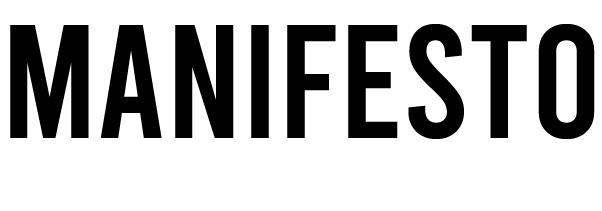
/The Contemporary Gap
The Contemporary Gap is a series of performative presentations on art and politics, organized as part of MANIFESTO Hijacking. These talks and presentations investigate the multifaceted and multidirectional relationships between identity, art, curation, history, reality, surveillance, and neoimperialism. The speakers approach these issues from different cultural and professional fields, cutting across disciplinary discourses and interpretive paradigms. They draw out patterns and pathways of thinking that help us, as artists and as citizens, confront the instrumentalization of art in global neoliberal capitalist conditions, and the ways this instrumentalization conditions life in Albania today.
The Contemporary Gap focuses on the lacunae in the conversation about how contemporary art in Albania functions, and how its audiences are empowered to act. Exploring theoretical and historical methods of investigation that are rooted in a close engagement with context, these interventions invite the creation of new narratives, new networks of collaboration, and new tools for revolution.
The Contemporary Gap explores topics such as: the violence of curation; the legacies of socialist realism and capitalist realism in the postwar period; technocratic state surveillance and its abuse of citizen information; the networks linking local oligarchies to global contemporary art; and the enactment of hoaxes in writing the history of art after socialism in Albania.
/ THE VIOLENT CURATOR
by Sonja Lau
The first question that the title of this talk raises is a question of tonality. Is the 'violent curator' a 'good' curator, or very much the opposite? Does this presentation aim towards the sketching of a legitimate position, or does it illustrate the odds and wrongs of the curatorial work? In the first place, why link a sense of violence to curating, a practice that has been allied with–and etymologically derived from–care: to be careful, to prevent damage, to provide for healing? The 'violent curator' that I would like to sketch as a possibility of action, is a kind person and in utter opposition to visible and invisible violence. Yet drawing on a very different form of 'care', he or she also senses the need for an alternative to 'peace'.
This talk does not intend to become a manifesto about curating, nor a manual for channeling artistic and curatorial practices in one or another direction. It is instead concerned with evoking an important mode of operating, one that has frequently been missing or diminished, for reasons that I hope to illustrate throughout this talk. Drawing on my earlier writings on vandalism as an artistic practice–and indeed, at times, as a strategy of survival–I will illustrate how the 'violent curator', like the vandal, seeks above all to create a meaningful relation to the world. This more than often means breaking things before constructing new ones; it means irritating, contaminating, and dismantling them before putting them back into (a better) place. It means keeping a moment of a confrontation with violence intact, just long enough to take a closer glimpse at how it is construed. A wound that heals all too quickly and without the trace of a scar is of no use. It is silenced before it speaks, burying words before they can be uttered. I assume that the 'violent curator' knows that, and often, acts accordingly to prevent premature healing.
/ LANDSCAPE WITH A MAN KILLED BY A SNAKE, OR, TOWARDS A CAPITALIST REALISM IN ALBANIA
by Raino Isto
This talk explores the emancipatory possibilities of reclaiming the promise of Capitalism Realism, a constellation of artistic practices that—like many of the postwar critical realisms—sought to critique and remake the experience of consumer society under global capitalism. In the present, neoliberalism has become even more entwined with neo-imperial and neocolonial projects, and any credible Realist method that seeks to both reflect and overcome contemporary systems of exploitation must take account of the ways that neoliberal frameworks utilized the rhetoric of democratization to morally sanction the inequities produced by the global market. Contemporary art is necessarily complicit in many of these discursive and systemic processes, especially in contexts—like Albania—where it is closely intertwined with the cultural capital of oligarchic elites. Despite this complicity, this talk aims to outline the potential of a realist method that would confront and possibly even disrupt the economic cycles that have currently captured cultural production. Tracing some of the aftereffects of Shock Therapy and elaborating the structure of neoliberal drives, the talk proposes that a kind of Capitalist Realism—a method that would openly pronounce its ideological character while still attempting to reflect and distill neoliberal experience, asserting the possibility that the present is knowable—is possible, and perhaps even necessary.
/ ART AS A MEDIUM OF TRUTH
by Jonida Gashi
Marco Lavagetto’s long forgotten but elaborate hoax during the first edition of the Tirana Biennial, which opened in September 2001, is the repressed and unresolved past that “haunts” the history of contemporary art in Albania. It provides an alternative starting point for that history, challenging its chronology. It also provides the tools for dismantling that history, challenging its construction. The techniques of dissimulation deployed by Lavagetto can also be used (and one thinks this was the artist’s intention all along) for the reverse purpose, in this case to deconstruct the fiction that drives the narrative on Albanian contemporary art, namely, the purported union of art and politics in the country. Ultimately, Lavagetto’s project functions as a cautionary tale about the ways in which artistic strategies – even highly complex and self-reflexive ones – can be hijacked by political actors. At the same time, it foregrounds the urgency of shoring up artistic strategies in the present and of reimagining how contemporary artistic practice can function as a medium of truth in the future.